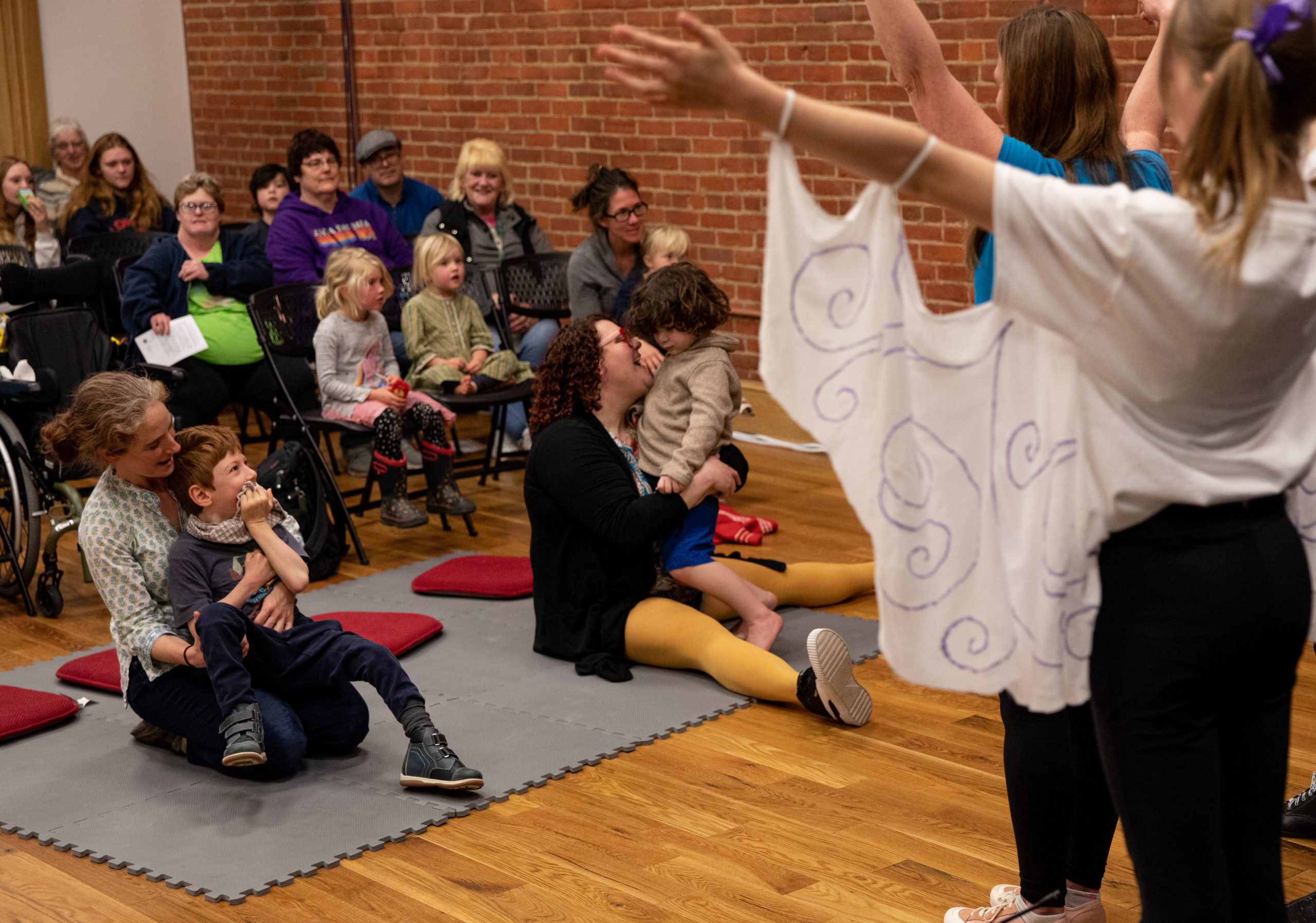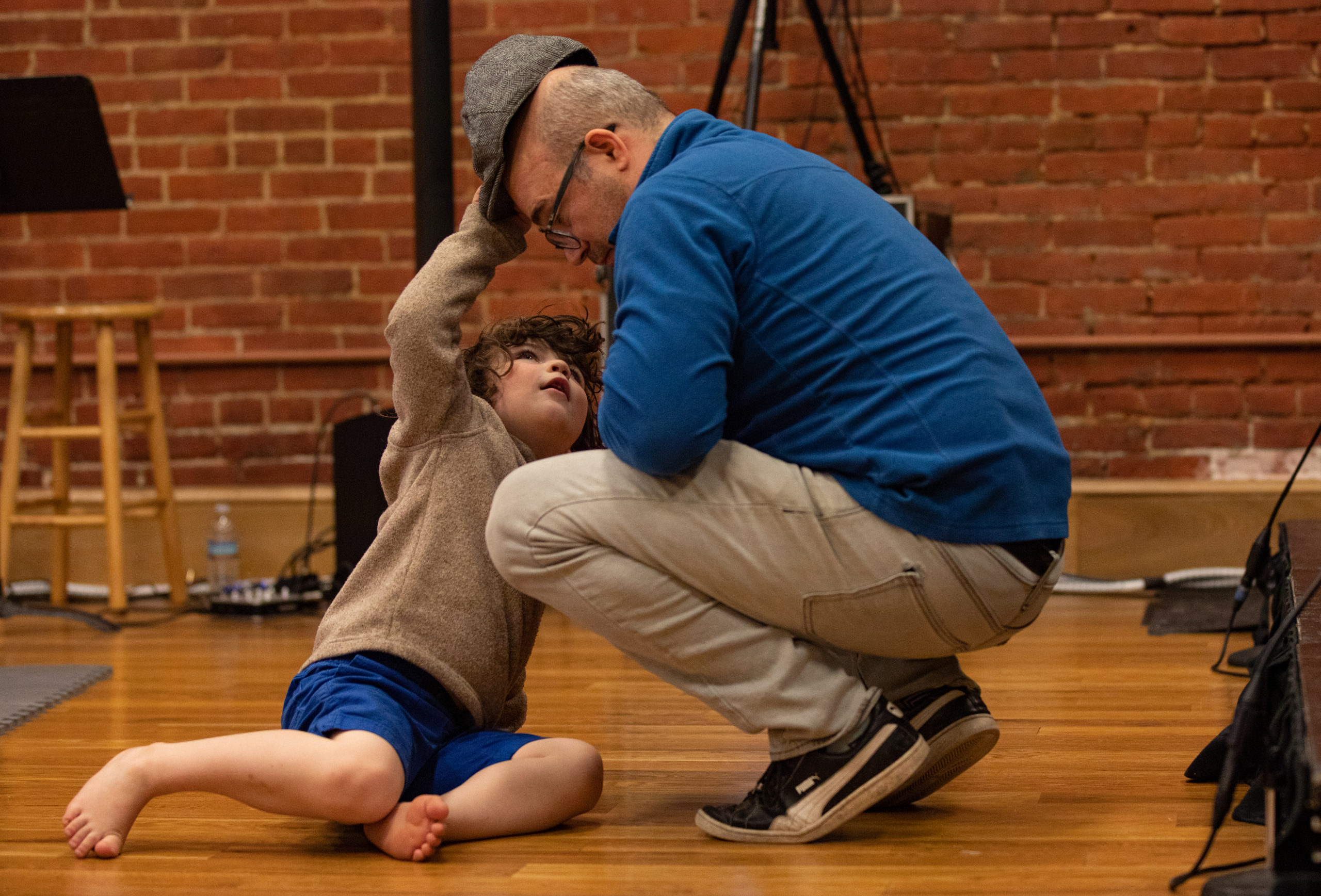
In Your Neighborhood / Summer 2023 Issue
A Sense of Place
The performance, “Animal Tales,” offered a theatre experience for those who have sensory-processing disorders.
For those accustomed to a traditional play setting where attendees enter, lights dim and audience engagement is discouraged, ABC Players’ sensory-friendly show, Animal Tales, is not that experience.
“Animal Tales” utilizes several distinct elements to make it more enjoyable for those with sensory-processing disorders or other developmental disabilities, including colorful masks and puppets. Audience engagement is heavily encouraged as the cast invites the audience to sing, dance and ad-lib for the duration of the show.

The performance area is wheelchair-accessible and includes space for movement and other activities like coloring. Mats line the floor of the space with easy accessibility to doors and restrooms. These amenities allow for vocalizations and movement without the social pressure of a neurotypical audience.
The Idea For…
An ABC Players sensory-friendly show started with Annah Korpi, an English as a second language instructor at Ohio University.
Korpi’s relationship with ABC Players began in 2007. She has always felt drawn to the theater and live music, a trait she passed on to her six-year-old son. He has cerebral palsy and is nonverbal but communicates through gestures and vocalizations.
“For a child who loves music and performances, these vocalizations can seem disturbing to others in the theater who may not be accustomed to them,” Korpi says. “If I’m sitting next to someone in an auditorium who’s paid twenty dollars for a ticket … and I’ve got these vocalizations and body movements, it’s very subconscious as a parent.”
To the left Rafael Ricci plays with his dad’s, Rob Ricci, hat as the “Animal Tales” production continued right behind Rob. Rafael took advantage of the new freedom during this musical to walk, run and skip across the stage during the performance, dancing along with the actors and getting a good look at the cast and their costumes.
She says her son also has medical issues that impact the time of day that their family is able to attend theater performances, making seeing typical shows more intensive to plan.
Korpi’s first experience with a sensory-friendly show was a dress rehearsal of a Christmas show at the Columbus Children’s Theater. She recalls the event having poor attendance, but the audience’s positive response and the accepting atmosphere of the show made up for the lack of community interest.
Why Sensory Friendly?
Korpi’s first experience with a sensory-friendly show was a dress rehearsal of a Christmas show at the Columbus Children’s Theater. She recalls the event having poor attendance, but the audience’s positive response and the accepting atmosphere of the show made up for the lack of community interest.
“You had teenagers who were walking up and down the aisle making vocalizations. You had someone … groaning during all of the dialogue, and as soon as the music and dancing started, he was just excited and watching,” Korpi says.
After attending that show, Korpi realized how beneficial sensory-friendly shows are for attendees, and after some persistence, ABC Players made a sensory-friendly show out of one of their rehearsals for “James and the Giant Peach.”
“There are children and adults in the community that feel like they can’t attend a show because either it has flashing lights, or it’s too loud and overstimulating,” Jodi MacNeal, director and president of ABC Players.

The dress rehearsal allowed a smaller setting with more room to move for audience members.
After the dress rehearsal, Korpi advocated for a sensory-friendly performance and Celeste Parsons, long-time ABC Players director, picked up the idea immediately and ran with it, writing music scores and conceptualizing the show.
“There is nothing like this being done down in this part of the state,” Parsons says.
“There is nothing like this being done down in this part of the state,” Parsons says. “There are a number … of caregivers and teachers and people who would be interested [in the show].”
After…
A short first half featuring a conglomeration of songs involving animals, a brief intermission allowed audience members to reminisce about act one and ponder what would be next.
Parsons wrote the music for the entire second act of “Elephant’s Child,” a story adapted from Rudyard Kipling’s, “The Elephant’s Child,” about how elephants came to have their long trunks.
“Seeing the excitement on the faces of those who get to attend [the play] and enjoy it … and the fulfillment from ABC players to feel like we’ve met a need in the community that hasn’t been met yet.” MacNeal says.

The full cast then reappears on stage to close out the performance with a familiar tune: “So Long, Farewell,” from “The Sound of Music.” Afterward, the animals leave the stage and begin to mingle with the audience.
Parsons is hopeful, though, that it won’t be a “farewell” for long.
“We are also hoping to turn some kind of sensory-friendly performance into something that ABC Players does every year,” Parsons says, “That’s what the objective is.”
